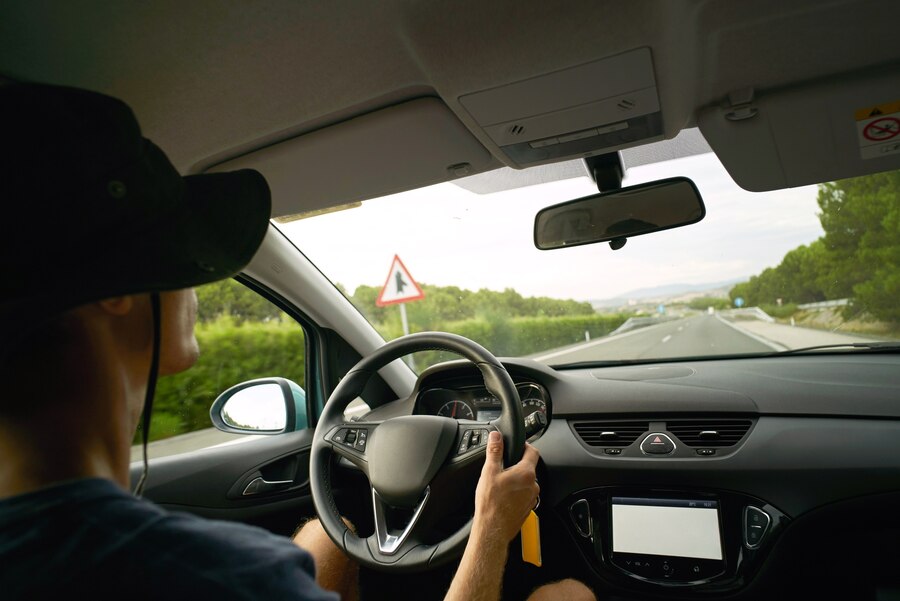Introduction:
Every time you hit the road, safety is paramount. It’s not just about obeying traffic laws; it’s about ensuring that you, your passengers, and other road users are protected. The importance of safety cannot be overstated, whether it’s the safety features in your car, your driving habits, or the car insurance that shields you in case of accidents.

“Driven by Safety”
emphasizes the significance of prioritizing protection and taking proactive steps to reduce risks on the road. This article explores how safety is built into modern vehicles, how car insurance helps safeguard against the unexpected, and why driving with a safety-first mindset is key to reducing accidents and saving lives.
Why Safety Should Be Your Top Priority
Driving is one of the most common activities in our daily lives, but it’s also one of the riskiest. Accidents can happen at any time, regardless of how cautious you are. That’s why driving with a focus on safety is essential — it involves more than just wearing your seatbelt or following traffic signals.
Understanding the Risks
Accident Statistics: According to global traffic reports, millions of accidents happen annually, resulting in injuries and fatalities. In fact, traffic accidents are among the leading causes of death worldwide.
Unpredictable Roads: Weather, road conditions, and other drivers’ behaviors can make even the most experienced driver vulnerable to unforeseen circumstances.
How Safety Protects You and Others
When you’re driven by safety, you’re taking measures to reduce risks and protect everyone on the road. Whether you’re commuting to work, driving your kids to school, or embarking on a weekend road trip, making safety a priority lowers the chances of accidents, injuries, and financial loss.
Key Safety Features in Modern Vehicles
Advancements in technology have revolutionized car safety features, making modern vehicles much safer than ever before. Here are some of the most common features that help keep you safe on the road:
Advanced Driver Assistance Systems (ADAS)
ADAS refers to a range of systems designed to assist drivers and make driving safer. Some of the most common features under ADAS include:
Lane Departure Warning: Alerts you when you’re unintentionally drifting out of your lane.
Lane Keep Assist: Actively steers the car back into the lane if it detects that you’re veering off.
Adaptive Cruise Control: Adjusts your vehicle’s speed based on the traffic conditions, maintaining a safe distance from the car in front.
Forward Collision Warning and Automatic Emergency Braking: Warns you of potential collisions and automatically applies brakes if you don’t react in time.
These features help prevent accidents by offering assistance before a dangerous situation can occur, keeping drivers and passengers safer.
Anti-lock Braking System (ABS)
ABS is a safety feature that prevents the wheels from locking up during hard braking, allowing the driver to maintain steering control. This is especially crucial during emergency situations, where being able to steer your vehicle can make all the difference between avoiding a collision and causing an accident.
Electronic Stability Control (ESC)
ESC helps prevent skidding and loss of control, especially in slippery conditions. It automatically applies brakes to individual wheels and adjusts engine power to help you regain control of your car, particularly during sudden turns or sharp maneuvers.
Blind Spot Detection and Rear Cross-Traffic Alert
These systems alert drivers when a vehicle enters their blind spot or when another vehicle is approaching from behind when reversing. This is particularly useful when changing lanes or backing out of parking spaces, reducing the risk of accidents that may not be immediately visible to the driver.
Automatic High Beams
Automatic high beams adjust the car’s headlights based on traffic and road conditions, improving visibility without blinding other drivers. This makes nighttime driving safer by ensuring you can see clearly while not causing discomfort to other drivers on the road.
The Role of Car Insurance in Ensuring Safety
Even with the best safety features, accidents can still happen. This is where car insurance plays a critical role in ensuring your financial security and providing protection in the event of an accident.
Comprehensive Coverage for Every Scenario
Car insurance provides a safety net for situations that are beyond your control. Here’s how various types of coverage can enhance your safety:
Liability Insurance: Covers the costs of damages or injuries you cause to others in an accident. This includes both bodily injury liability and property damage liability.
Collision Coverage: Pays for damages to your own car after an accident, regardless of fault. It ensures that you’re not left facing hefty repair costs after an accident.
Comprehensive Coverage: Protects your car from non-collision events such as theft, vandalism, natural disasters, and more.
Uninsured/Underinsured Motorist Coverage: If you’re in an accident with someone who doesn’t have enough insurance, this coverage protects you from the financial aftermath.
Quick Access to Roadside Assistance
In case of emergencies like car breakdowns, flat tires, or accidents, reliable car insurance policies often include roadside assistance. This can save you time and stress when you’re stranded or need immediate help, ensuring that you don’t have to navigate a difficult situation alone.
Accident Forgiveness
Some insurance providers offer accident forgiveness, which means that your first accident won’t result in higher premiums. This provides added protection for drivers, ensuring that one mistake doesn’t lead to severe financial consequences.
Safe Driving Practices: The First Line of Defense
While modern vehicles and car insurance offer fantastic protection, your personal driving habits are the first line of defense. Here are some ways to improve your driving safety:
Always Wear Your Seatbelt
Seatbelts are the simplest and most effective safety feature in any vehicle. They reduce the risk of injury or death in a crash by keeping you securely in your seat, preventing you from being thrown from the vehicle.
Avoid Distracted Driving
Using your phone, eating, or engaging in other distractions while driving significantly increases the risk of accidents. Keeping your attention focused on the road is essential for your safety and the safety of those around you.
Drive Defensively
Defensive driving involves anticipating potential hazards and adjusting your driving to stay safe. This includes maintaining a safe following distance, adjusting your speed to road conditions, and being prepared for other drivers’ mistakes.
Maintain Your Vehicle
Regular maintenance ensures that your car is always in top condition, reducing the risk of mechanical failures that could cause accidents. Checking tire pressure, brake functionality, and engine performance are simple steps that can save lives.
The Future of Driving Safety
With rapid advancements in automotive technology, the future of driving safety looks bright. New innovations, such as self-driving cars, augmented reality dashboards, and enhanced vehicle-to-vehicle communication, promise to make the roads even safer.
Automakers and insurance companies are continuously working together to integrate these technologies, aiming to reduce accidents, protect drivers, and save lives. As we move toward a safer and more technologically advanced driving future, “Driven by Safety” will become a reality for all drivers.

Conclusion
“Driven by Safety” is a mindset that every driver should adopt. By prioritizing safety through the use of advanced car features, practicing safe driving habits, and ensuring you have reliable insurance, you are taking proactive steps to protect yourself, your passengers, and others on the road.Whether you’re driving across town or embarking on a long journey, safety should always be at the forefront of your mind. With the right tools, behaviors, and support, we can all contribute to safer roads for everyone.

